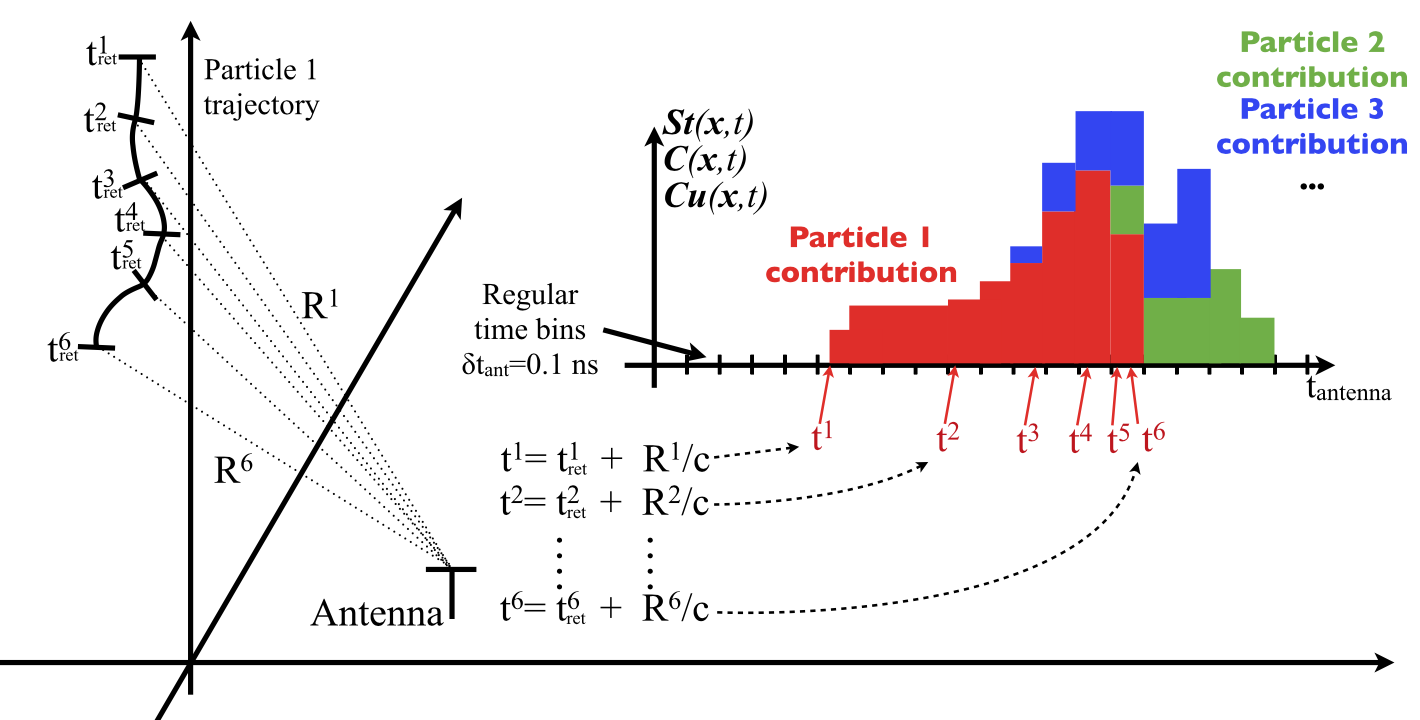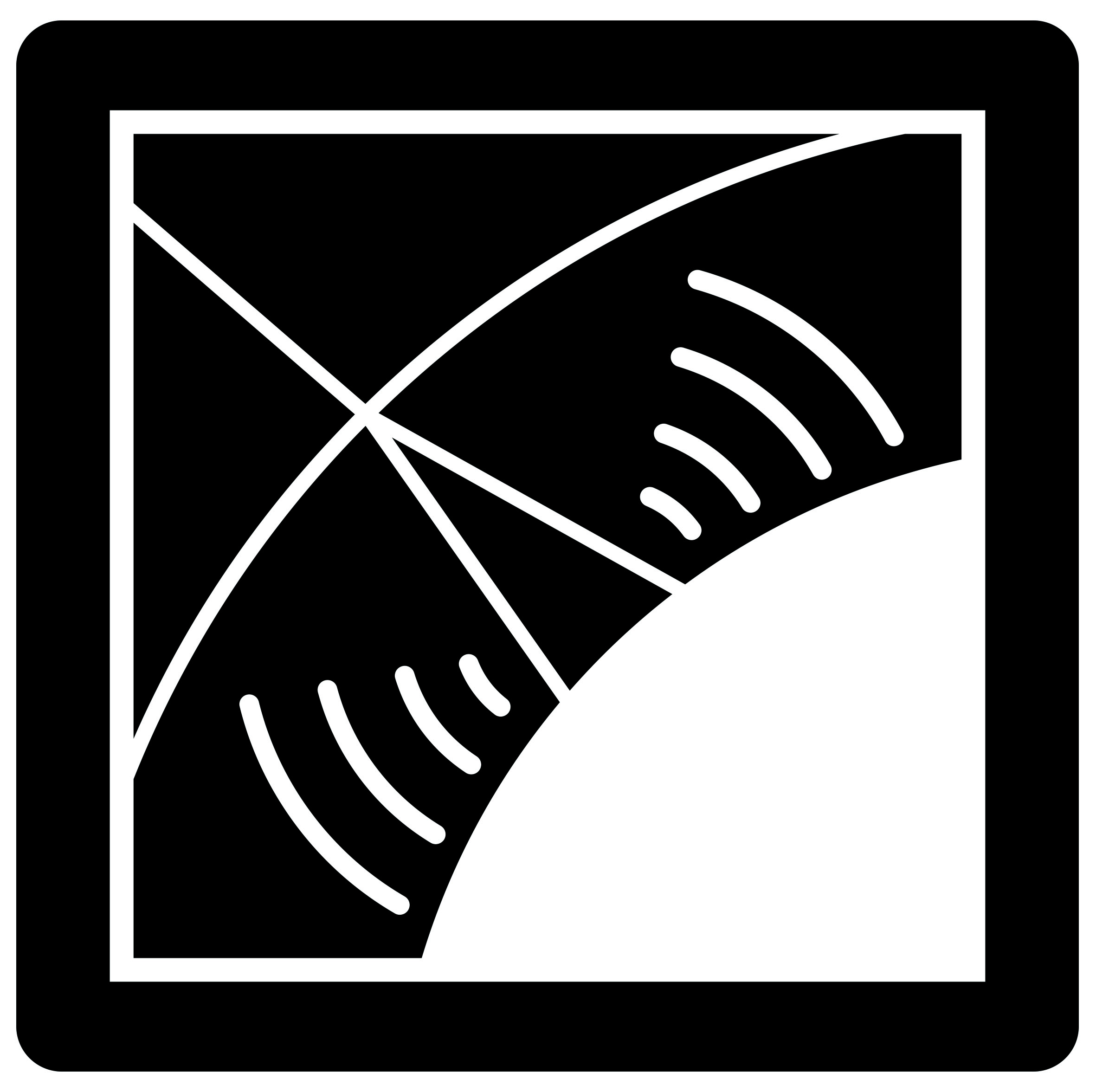Simulation of radio emission from cosmic ray air shower with SELFAS2
We present a microscopic computation of the radio emission from air showers initiated by ultra-high energy cosmic rays in the atmosphere.
 Figure: the principle of SELFAS calculations. The length of an individual particle track of the particle trajectory is divided in short tracks allowing us to compute energy losses and deviations due to geomagnetic field and to multiple scattering. At the starting point and at each end of short track, sti(x,t), ci(x,t) and cui(x,t) are calculated independently and added to three independent histograms corresponding to St(x,t), C(x,t) and Cu(x,t). Once all particles have been considered, the time derivatives for C(x,t) and Cu(x,t) are performed and the complete electric field at this position is obtained summing up the three total contributions.
Figure: the principle of SELFAS calculations. The length of an individual particle track of the particle trajectory is divided in short tracks allowing us to compute energy losses and deviations due to geomagnetic field and to multiple scattering. At the starting point and at each end of short track, sti(x,t), ci(x,t) and cui(x,t) are calculated independently and added to three independent histograms corresponding to St(x,t), C(x,t) and Cu(x,t). Once all particles have been considered, the time derivatives for C(x,t) and Cu(x,t) are performed and the complete electric field at this position is obtained summing up the three total contributions.
Published by V. Marin, B. Revenu, in Astroparticle Physics 35, March 2012, P. 733–741 http://dx.doi.org/10.1016/j.astropartphys.2012.03.007
